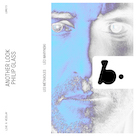

Les Métaboles: Another Look: Philip Glass & Andrea Basily
b•records
Having conducted Akhnaten, Satyagraha, and Einstein on the Beach, Léo Warynski's no stranger to Philip Glass's music. Yet while that opera trilogy is well-established, his Another Look at Harmony – Part IV (1975) is less familiar and little-performed, which makes this recording by the vocal ensemble Les Métaboles, founded by the Paris Conservatoire-trained Warynski in 2010 and its name inspired by a Henri Dutilleux piece, all the more valuable. Joining the group's sopranos, tenors, altos, and basses is organist Yoan Héreau, who's collaborated with Warynski for many years on opera productions and contributed to several Les Métaboles recordings.
Warynski sees Another Look at Harmony – Part IV “as a kind of condensed sketch of Einstein on the Beach,” and certainly there are elements the pieces share, despite the opera being the longer and more elaborate of the two, including repetitive vocal patterns, a minimalist vocal style, and arrangements that support the voices with organ. The stripped-down aesthetic of Another Look at Harmony – Part IV identifies it very clearly as an example—and a wholly entrancing one—of Glass's earlier style. The vocal technique required by the work is far different from the one associated with operatic singing, which has to do with expressive phrasing, vibrato, and a text-based libretto. In this instance, vocal motifs are repeated in the extreme, vibrato is absent, and a syllables-based system (think Solfège) is used. Ably supported by Héreau and directed by Warynski, the singers progress through eight distinct sections without pause, such that changes are discernible without the music's continuity and flow being disrupted. Modulations in tempo are effected but ever so subtly so as to make it appear little deviation is occurring. Such nuances amplify the lyrical and expressive qualities of this luminous music, captured live on January 11th, 2024 at Vézelay's La Cité de la Voix, and make it seem anything but mechanical.
Another Look at Harmony – Part IV begins calmly with male and female pairs of conjoining choral breaths, the character of the music peaceful, serene, and patient in its graceful unfolding and with simple, single-note tones from the organ reinforcing that feeling. The vocal presentation swells dynamically in the second section as the patterns rise and fall and contract and expand; trademark Glass organ trills and arpeggios cycle alongside the oceanic vocal mass as the work makes its way through the sections. Abetted by the organ's unrelenting thrust, the lilt and swoon of the singers' lines prove bewitching as the work barrels forth with laser-focused intent. It soars until the fifth part cedes the spotlight to the organist for a calming interlude, after which the singers rejoin Héreau for an epically droning, twelve-minute sixth section that's intricately woven with vocal layers and punctuated with blazing organ flourishes. A brief solo organ interlude anticipates the climactic final section, whose sparkling blend of choral and organ textures was revisited by the composer in a more compact form on his North Star release from 1977.
Paired with the work by Glass (b. 1937) is one by Andrea Basily (1705-77), Canone a 16 all' unisono, which despite having been written centuries before the other, complements it excellently. As formally different as the works are, the elegant design of Basily's makes it a natural partner to Glass's. Enhancing its appeal, the unpublished canon selected by Warynski and company had not been edited or recorded before (it was discovered in the manuscripts of the Bibliothèque nationale de France). The transition from Glass to Basily also makes for an effective pairing when the former's incremental journey toward paradise carries over into the canon, which the conductor refers to as “a kind of angels choir, perfect, cyclical music that turns almost magically.” The hour-long Another Look is as commendable for featuring the rapturous Basily piece as it is for presenting the seldom-heard Another Look at Harmony – Part IV, with both of these expressive works deserving of the splendid attention the ensemble and its music director have given them.May 2025